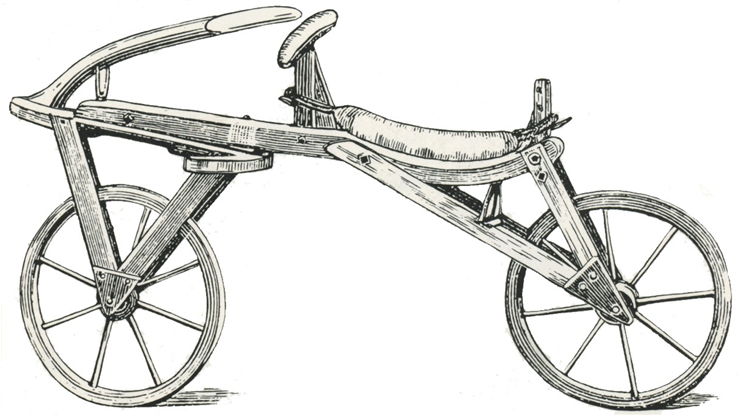Draisine History and Types
Draisine is evolution of the human-powered transportation device that was originally devised by the German Baron Karl Drais and his “Laufmaschine” bicycle that was made in 1817. What this inventor brought to the European market in early 19th century was two wooden wheels connected with the main beam that housed simple controlling rod and seating place. Users who drove this device did not have access to pedals and chain drive like on modern bicycles, but had to reach with their legs to the ground and propel themselves forward by either walking or running.
This simple design very quickly received many upgrades from the inventors from all around the world, but the French name “draisine” that described this Dandy Horse design continued to live on by describing another transport device – a rail vehicle with three or four wheels that was powered either by the service personnel or by diesel engines. These devices started being used all around the world as very easy and simple way of transporting personnel and maintenance tools across railway infrastructure. Because all these draisine rail vehicles were made to be as light as possible, one or two people could easily operate and propel them. Manual driving mechanisms varied from one draisine to another, ranging from hand lever, hand pedals, leg pedals for users who were sitting down on the floor, a four wheeled platform with two full bicycle sets placed on either side of it, or even a two-wheeled bicycle that had additional stabilization pieces that enabled it to remain stable while being locked to the structure of one rail. In 20th and 21st century, these railroad devices are rarely called as draisine. They are mostly referred as handcars, speeders or road-rail vehicles (vehicles that can drive both on rails and traditional roads).
Types of modern draisine rail vehicles:
- Two wheel draisine
- Three wheel draisine
- Four wheel draisine
- Hand propelled Manual
- Leg propelled
- Motorized personnel draisine
- Motorized carriage draisine
- Road to rail converted cars
- Military rail draisine vehicles (small armored draisines or train cars that were sometimes weaponized, used for scouting, protecting trains, and other use case scenarios. They stopped being used after World War II).
